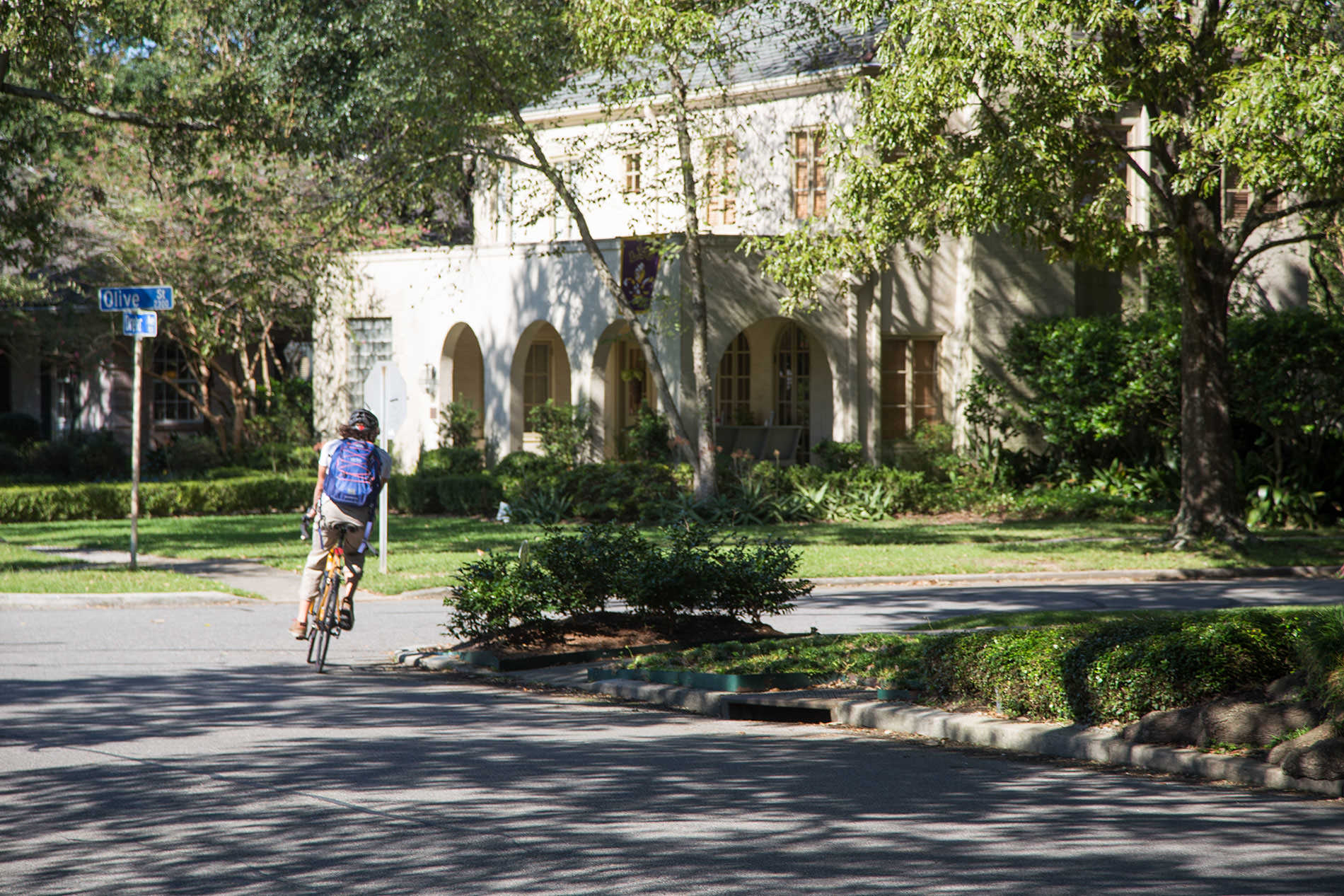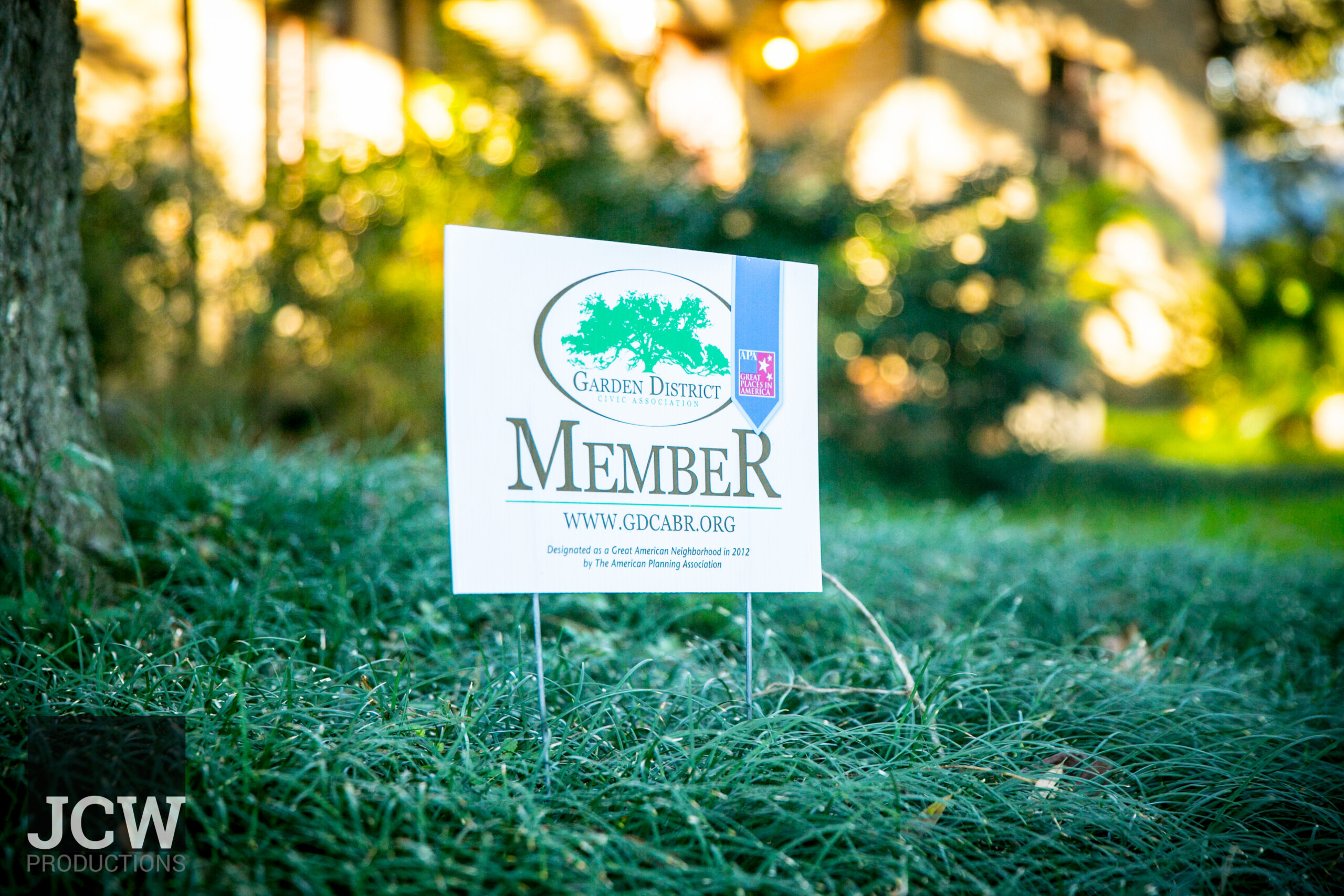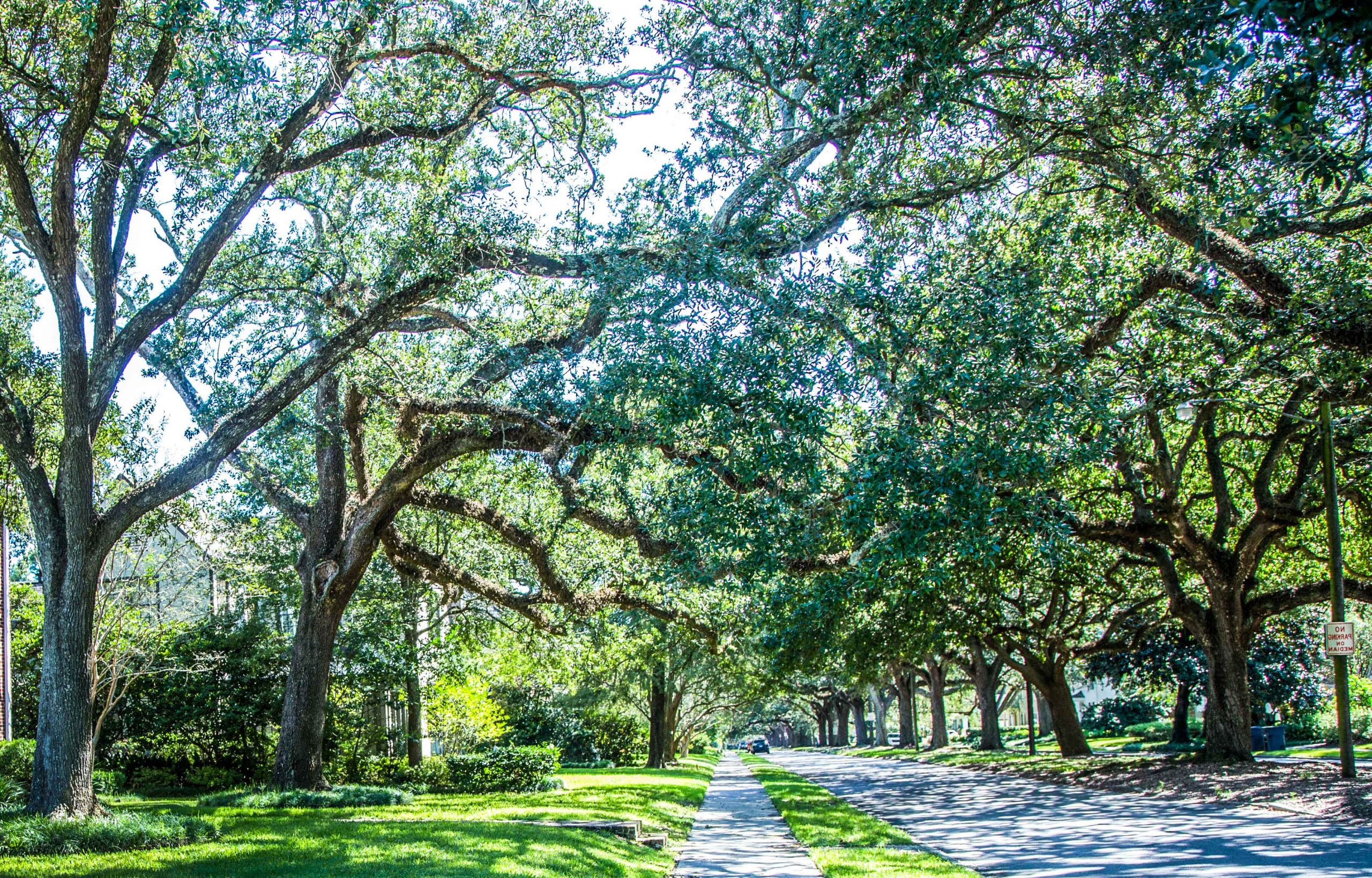Written by Steven Gremillion, PLA
I think I can comfortably assert that all of us in the Garden District love our Live Oaks. It is what gives a great deal of the charm to our neighborhood – especially our boulevards. We all know they require a fair amount of pruning and cleanup each year, and we’ve accepted that as a trade off for the beauty they lend to our streetscape.
When I’m not wandering the Garden District with my wife and our Chocolate Lab, I spend my days designing landscapes, and live oaks are a daily part of that job. My clients invariably love them, but they present a few challenges to garden design. One of the most common complaints I get in my practice is that people cannot get grass, or really anything, to grow under their oaks. Since these trees are ubiquitous in South Louisiana, I have learned that attempts to grow anything under a live oak requires careful thought, but it can actually be a great help to the tree and the yard in the long term. Anything planted beneath these trees has to be able to thrive on minimal sunlight, limited resources, and invading surface roots.
When I work under live oaks, I opt for a palette of native (or native adjacent) understory plants to create a lush, green, low maintenance landscape. This consists of flowering native perennials (texas spider lily, ligularia), woody shrubs (itea, beautyberry, hydrangea), and lots of ferns. When this landscape is established, it can attract pollinators, birds, and other wildlife, and this can keep the boulevards looking green for most of the year. Additionally, by underplanting these areas, we discourage drivers from compacting the soil and damaging the roots, simply because people are less likely to park on a planted area. As these trees age, their growth becomes more finicky, and like our elders, they get less tolerant of adverse conditions. These giants prefer loose organic soil that hasn’t been compacted by parked cars or mowing; the plants become a layer of “green mulch,” they provide nutrients and oxygen to the tree through a symbiotic relationship with fungi in the soil. Lastly, underplanting removes the need to deal with one of the biggest annoyances of these trees – the leaves. With a planted understory, these leaves can be allowed to naturally compost and incorporate nutrients back to the soil without being an eyesore.
I also have to mention one of my favorite books about the incredible host for life that each of our live oaks becomes as it matures:“The Nature of Oaks,” by Doug Tallamy. In this short-ish read, Tallamy gives an easily digestible and compelling overview of the rich diversity of insects, birds, fungi, and companion plants that make up the ecosystem of each tree, as well as the impact they have on their surroundings. It is truly spectacular what one of these trees does for the environment, and our collection of live oaks within the Garden District has a profound impact on the quality of our daily lives. So I think it is our obligation as stewards of this landscape to do all we can to preserve and enhance the natural beauty that they offer.








